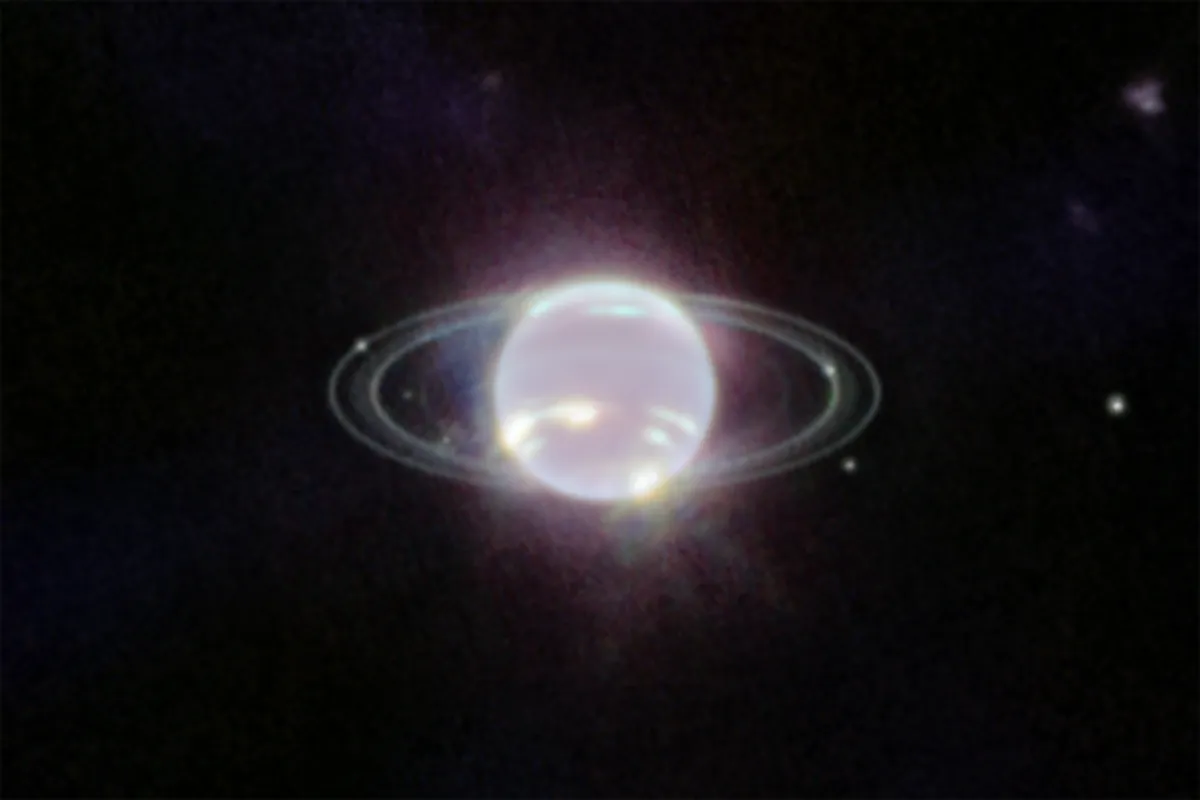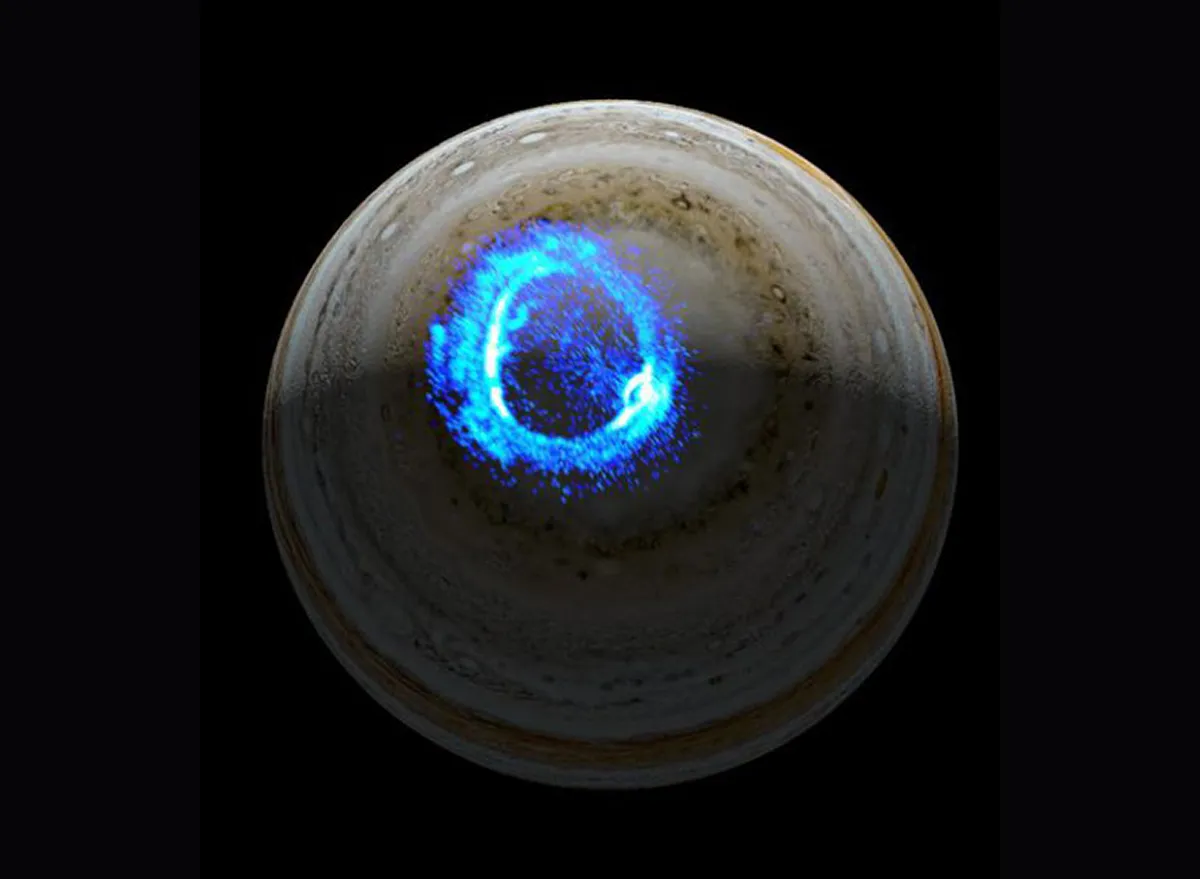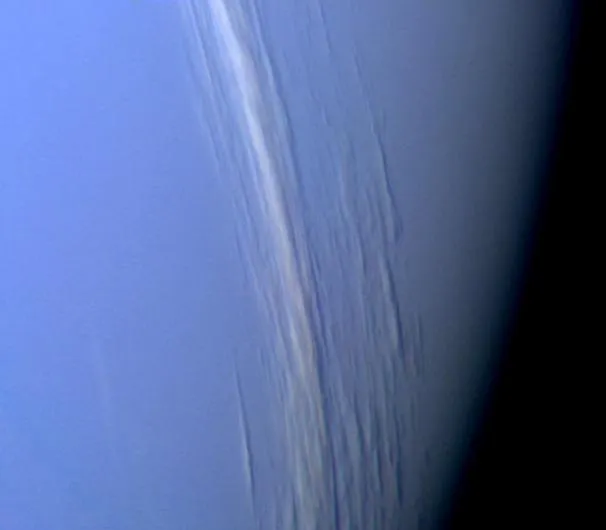Have you ever seen the aurora in the night sky?
Earth isn't the only planet in the Solar System to have auroral displays, and now the James Webb Space Telescope has successfully detected aurora on Neptune, the most distant planet in our Solar System.
Neptune is about 4.5 billion kilometres (2.8 billion miles) from the Sun, yet Webb has been able to confirm for the first time that this distant icy giant has aurora displays.

Confirming Neptunian aurora
Aurora is caused by charged particles from the Sun hitting a planet's atmosphere, releasing energy that causes a visible glow.
NASA's Voyager 2 is the only spacecraft to have flown close by Neptune, and when it did so in 1989, it showed signs that Neptune might have aurora.
And despite aurora having already been successfully detected on Jupiter and Saturn, confirmation of aurora on Neptune evaded astronomers.

It took the James Webb Space Telescope to finally confirm aurora on Neptune.
"Turns out, actually imaging the auroral activity on Neptune was only possible with Webb’s near-infrared sensitivity," says study lead author Henrik Melin of Northumbria University in the UK, who conducted the research while at the University of Leicester, also in the UK.
"It was so stunning to not just see the auroras, but the detail and clarity of the signature really shocked me."

How Webb saw Neptune's aurora
Back in June 2023, the Webb Telescope studied Neptune using its Near-Infrared Spectrograph instrument.
This data gave planetary scientists a fantastic view of Neptune, but also spectral information enabling them to learn more about the composition and temperature of Neptune's upper atmosphere, which is where aurora occur.
The data revealed the presence of trihydrogen cation (H3+), which can be created in auroras.

You can see the aurora display in the Webb images of Neptune, the aurora appearing in cyan.
A Hubble Space Telescope image of Neptune shows the planet as a blue disk.
But a composite image of Neptune using Hubble data and Webb data combined shows splotches of cyan.
This is aurora on Neptune, seen for the first time ever.

"H3+ has a been a clear signifier on all the gas giants — Jupiter, Saturn, and Uranus — of auroral activity, and we expected to see the same on Neptune as we investigated the planet over the years with the best ground-based facilities available," says Heidi Hammel of the Association of Universities for Research in Astronomy, Webb interdisciplinary scientist and leader of the Guaranteed Time Observation program for the Solar System in which the data were obtained.
"Only with a machine like Webb have we finally gotten that confirmation."

What is Neptune's aurora like?
Scientists say the aurora on Neptune is different from that seen on Earth, Jupiter and Saturn.
Rather than being concentrated at Neptune's poles, its aurorae are found at mid latitudes.
This, say planetary scientists, is because of Neptune’s magnetic field, discovered by Voyager 2 in 1989, which is tilted by 47° from the planet’s rotation axis.
And because aurorae are located where a planet's magnetic fields converge into the atmosphere, Neptune’s aurorae are far from its poles.
This means the Webb detection of aurora on Neptune is giving scientists more information about Neptune's magnetic field, and how it interacts with charged particles emanating from the Sun.

Cooler Neptune explains its hidden aurora
Webb's observations of aurora on Neptune also enabled the team to measure the temperature of the top of Neptune’s atmosphere for the first time since Voyager 2’s flyby.
"I was astonished — Neptune’s upper atmosphere has cooled by several hundreds of degrees," says Melin.
"In fact, the temperature in 2023 was just over half of that in 1989."
Neptune's colder temperature is likely why its aurorae have remained undetected for so long.

Astronomers now hope to study Neptune with Webb over a full solar cycle, which is the name given to the 11-year cycle of peaks and troughs in solar activity.
This could help explain why Neptune has such a strange magnetic field and why it's tilted.
"As we look ahead and dream of future missions to Uranus and Neptune, we now know how important it will be to have instruments tuned to the wavelengths of infrared light to continue to study the auroras," says added Leigh Fletcher of Leicester University, co-author on the paper.
"This observatory has finally opened the window onto this last, previously hidden ionosphere of the giant planets."
The observations, led by Leigh Fletcher, were taken as part of Hammel’s Guaranteed Time Observation program 1249. The team’s results have been published in Nature Astronomy.
Read the paper at www.nature.com/articles/s41550-025-02507-9
